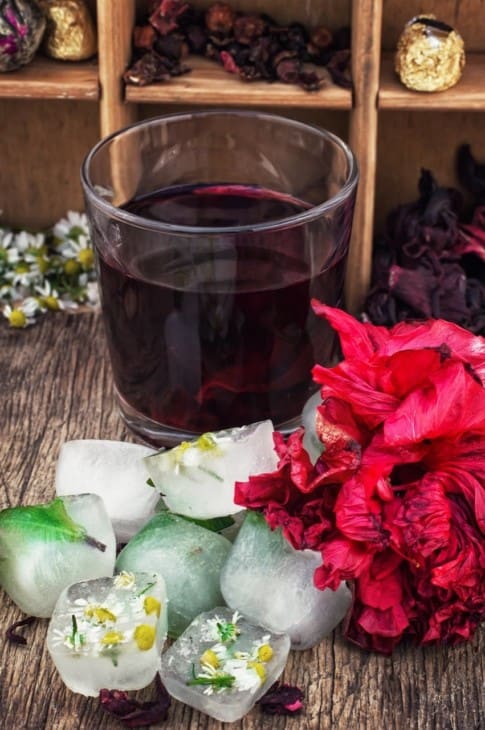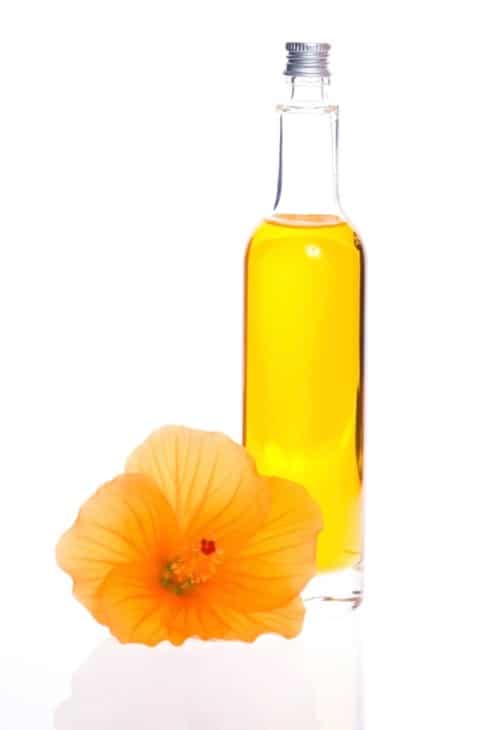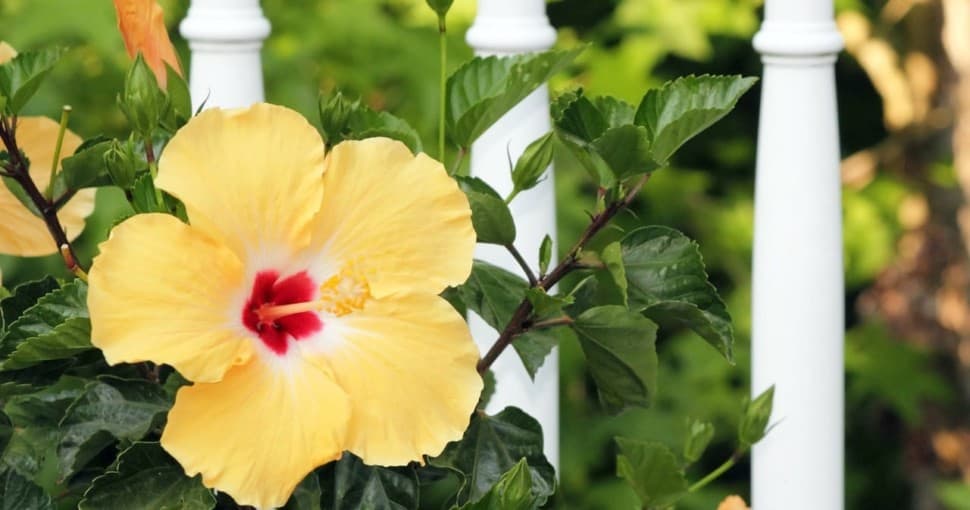Hibiscus plants are an incredibly beautiful plant species with excellent ornamental use in gardens. Some varieties grow over 3 meters tall. Hibiscus flowers are typically large, bright, and colorful, with a stunning array of colors available.
Contents
Most hibiscus plants are not poisonous to humans, dogs, or cats. These plants are edible, and they are used in numerous ways for cooking, baking, teas, and medication. However, certain hibiscus varieties are poisonous, whether only the roots or the entire plant.
Aside from understanding which hibiscus plants to look out for, how these might harm your child or pet if consumed, and how to treat anybody who has been poisoned, you should also be aware that there are potential benefits to consuming hibiscus plants. There are many ways these beautiful blooms can be incorporated into your everyday diet.
Related: 8 Plants That Look Like Hibiscus
Are Hibiscus Plants Poisonous?
Hibiscus refers to a genus of the Malvaceae family with more than 650 varieties. Hibiscus plants are classified as “toxicity category 4”, meaning they are generally considered non-toxic to humans.
While some claim that this level of toxicity (or non-toxicity) extends to all varieties of the hibiscus plant, it would seem that some varieties are, in fact, poisonous to dogs and cats.

Which Hibiscus Plants Are Poisonous?
The variety of hibiscus called the “Rose of Sharon” (Hibiscus syriacus) has been classified as a potentially toxic plant. If a dog ingests significant amounts of this plant’s flowers, it can experience diarrhea, nausea, and vomiting.
The flowers, as well as the stems of this hibiscus variety, are considered poisonous to cats. The toxicity of these plants – to both cats and dogs – is mostly due to an amino acid contained within the plant called asparagine.
This amino acid can cause vomiting, loss of appetite, diarrhea, and burning and blistering, which can potentially cause issues with drinking and eating. The plant’s roots tend to cause more serious problems than the rest of the plant.
Some hibiscus plants have poisonous roots. The consumption of these roots can cause the same symptoms mentioned above in humans, dogs, and cats.

What Are The Symptoms Of Hibiscus Poisoning?
Some of the symptoms that can occur as a result of consuming a toxic variety of hibiscus include:
- a burning sense in the throat or mouth
- pain in the eyes with potential damage to the corneas
- vomiting and nausea
- diarrhea
- gagging and coughing
- swelling, or blistering in the mouth and tongue
- and being unable to drink or eat
The severity of these symptoms will depend on the individual, the amount they consumed compared to their physical size, and which part of the plant they have ingested.
If you suspect your child or pet has ingested any part of a hibiscus plant that you think might be toxic, it will be in your best interest to have them taken to an emergency room (or a vet) to ensure that the correct treatment is administered to prevent any lasting damage.
How Do You Treat Hibiscus Poisoning In Dogs?
Hibiscus poisoning is treated in the same way as most other plant poisonings. Treatment consists of removing the substance from the body followed by detoxification using fluids, and lastly, observing the dog to ensure no further adverse effects.
In order to remove the toxic material from the dog’s system, your veterinarian will induce vomiting by administering ipecac or a solution made from peroxide. After this, any remaining toxins can be absorbed by giving the dog activated charcoal.
The next step involves detoxification, achieved through the use of intravenous (IV) fluids which serve the purpose of flushing out the dog’s kidneys while simultaneously preventing dehydration that may occur as a result of vomiting and diarrhea.
If the dog has any blisters or burns as a result of poisoning from the plant, you will recommend a topical lotion to be applied to the area three times per day. If the sores as mentioned earlier are inside your dog’s mouth, the vet may give the dog a cortisone injection, perhaps recommending a spray that you can use at home to the same effect.
Depending on how your dog responds to treatment, the vet will decide whether it’s necessary for the dog to remain under observation or not. If it’s not deemed necessary, you will most likely receive instructions on how to carefully observe the dog yourself and what signs to look out for.
If you were able to act quickly and your dog received their treatment immediately, they should be completely recovered within a couple of days. Keep a close eye on your dog’s condition and ensure that you administer the medication as recommended.
Most importantly, ensure that your dog doesn’t have access to the hibiscus plant whatsoever because the chances are that he will attempt to eat the plant a second time.
How Can You Prevent Hibiscus Poisoning?
While the majority of hibiscus plants are not poisonous, there are some plant varieties that can be extremely toxic, especially to dogs. It’s important, therefore, that you’re able to identify them and know which plants you need to be careful of.
If you can’t be a hundred percent certain about whether your hibiscus plant is of the poisonous variety or not, it would be best to keep it completely out of reach of your pets to ensure they do not end up ingesting a toxic plant.

What Are The Non-toxic Parts Of Hibiscus Used For?
Hibiscus has been used for centuries in a multitude of food applications. Originally used in Asia and the Nile Valley for making tea, hibiscus flowers have since been adopted into tea-making culture across the globe.
While all parts of the plant can potentially be used for making tea, it has been established that the flowers make a sweeter tea while the leaves make a slightly more acidic, bitter tea. When it comes to most hibiscus plants, the majority of the plant is edible.
This includes the flowers, leaves, and fruit, also known as the calyx. The calyx is the central part of the flower that is shaped like a cup. When the flower has completed its blooming period, the petals fall off, and the calyx turns into a seed-containing pod. These calyces are often the component that is used in drinks that utilize hibiscus.
Some varieties of hibiscus, such as the rosa Sinensis, are used as a food and a flavoring, with young leaves being enjoyed in salads and stir-fries in China. All over the world, hibiscus flowers, with their tart, citrusy flavor, are eaten in numerous ways, such as raw, pickled, or cooked.
They can also be utilized as a food dye or even as a spice to enhance any meal.
Hibiscus has also been used traditionally to treat and manage the symptoms of a host of ailments, including coughs, skin diseases, high blood pressure, gallbladder attacks, cancer, and heart disease.
In Egypt, hibiscus tea was used to help lower body temperature while simultaneously treating heart diseases and nerve diseases. Hibiscus is often used as a diuretic to assist with the production of urine in individuals who struggle in this regard.
On the African continent, hibiscus tea was believed to treat constipation, cold, and influenza symptoms, and the pulp was applied as a skin remedy for wounds. To this day, Iranians drink sour tea made with hibiscus to alleviate high blood pressure.
It has been recently discovered (but not yet scientifically confirmed) that hibiscus contains numerous antioxidants, such as flavonoids and others, that can potentially help to lower blood sugar and assist with weight loss.







